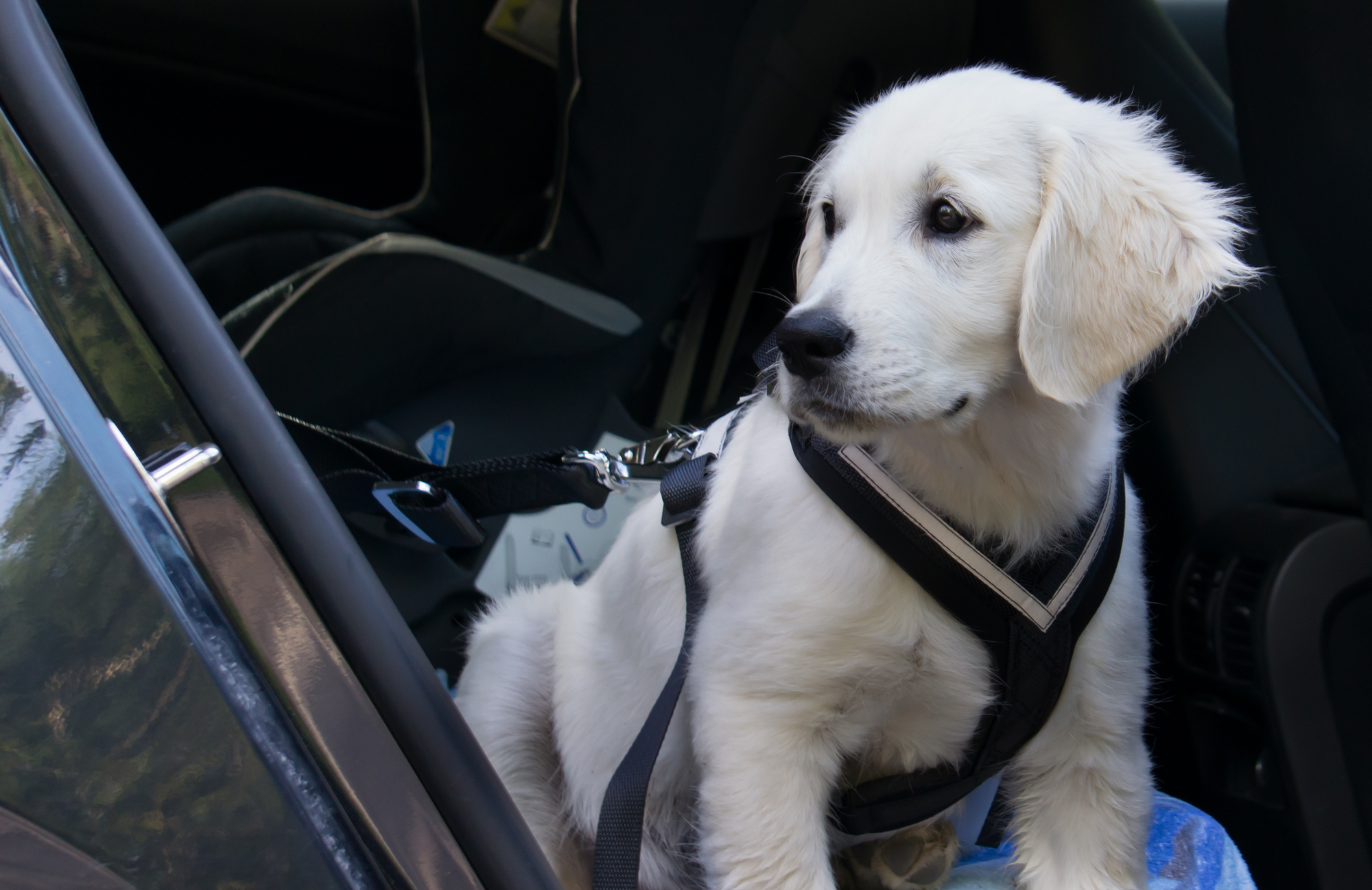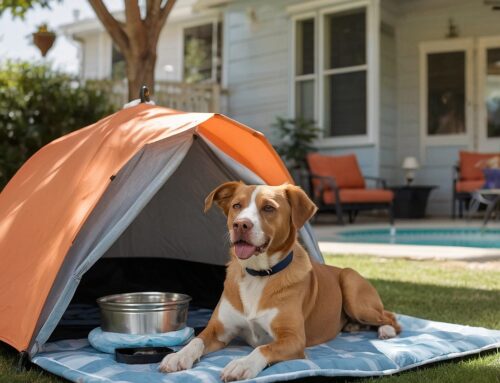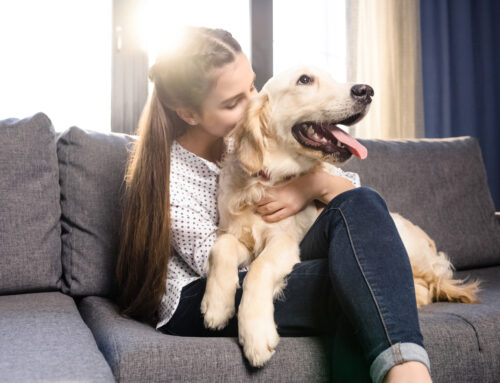Whether you’re taking a road trip with your family or just going to the vet for an annual checkup, it’s important to keep your dog safe in your vehicle at all times. Below are some tips on how to keep dogs safe and happy when traveling with them.
To Reduce Your Dog’s Anxiety, Take a Few Practice Trips
Some dogs can’t help but become anxious at the start of a journey. There are obvious giveaway signs of this, including whining. Such behavior has the potential to turn excursions into very long trips if it’s not curbed before they begin.
To overcome this behavior, it may help to take your dog on a few practice trips in your vehicle to get him or her used to the idea of riding in a moving car or truck. Acclimate them to getting in and out of the vehicle, and to the sounds of the engine, the doors and the horn. Motor slowly at first, and don’t travel too far.
Most dogs will become comfortable with the movement, momentum and inertia of driving after a few trips, and some dogs may eventually even look forward to going for a ride.
Contain or Restrain Your Dog
Most people wouldn’t drive anywhere without securely strapping in their kids first; why should your dog be any different?
There are two ways to safely restrain a dog: a harness (sometimes called a pet belt) and a crate (a cage-type container that’s typically larger than a dog carrier).
Some pet belts connect to the existing seat belt buckles in your car or truck. These allow for some movement from your dog, but still keep him or her secure in his or her seat.
A crate is another great transportation tool because your dog is able to sit, stand, lie down and move around some.
Don’t Allow a Dog to Stick Its Head Out the Window
Many dogs love to stick their heads out the window of a moving vehicle, but this is a no-no, as debris and other objects can fly into their eyes and/or cause head injuries. It’s alright to crack windows to let fresh air in, but keep them closed enough so your furry friend can’t stick their head outside.
Take Breaks on Long Trips
Long family road trips can be a recipe for driving everyone stir crazy, and that includes your dogs. Taking a few breaks that are on the longer side will allow you, your passengers and your dogs to take a breather, stretch your legs, walk a bit and possibly get a bite to eat. Bear in mind that gas and bathroom stops alone may not be enough, especially for longer distances.
Feed Your Dog Throughout the Journey
To prevent your dogs from getting car-sick, do check with your veterinarian first. Some vets may recommend preparing a small meal for them a few hours before you leave. When it’s time for them to eat again, pull over and take one of your longer breaks, so your dogs can eat while stationary. If they choose not to eat, don’t worry, they may just not be in the mood quite yet. You can try again at another break time or when you reach your destination.
It’s important to always have water on hand for your dog throughout their trip. Some crates allow for hanging water bowl. Collapsible water bowels are also handy on road trips.
Make Sure Your Dog is Microchipped and IDed
When you’re pulled over in unfamiliar territory, dogs can become nervous. In addition to always having them on a leash and double checking that their dog collar is well-fitting, there are other safety steps. Before you take your dogs on trips, make sure that they’re microchipped and wearing ID tags.
The Most Important Tip: Never Leave Your Dog in an Unattended Vehicle
Never leave your dog in an unattended vehicle, for any reason.
The interiors of cars heat up and cool down quickly — even if you have the windows open a bit. While many people think that they’re only going to dash into a store, restaurant or other business, it’s all too easy to forget that your furry friend has no escape from the brutal and unrelenting heat or cold.
When it comes to heat, dogs only have a limited number of eccrine glands on their paw pads and nose for sweating. The only other defenses a dog has against heat are panting (which releases moisture) and fur (which can block direct sunlight). The average body temperature of a dog is from 99.5 to 102.5 degrees Fahrenheit. When it gets hotter than 80 degrees inside a vehicle, dogs pant more and more furiously, but this comes at a cost of dehydration.
Remember that on a warm day, the temperature inside a vehicle will always be hotter than the temperature outside. If the outside temperature is 89 degrees, a car interior can reach a potentially deadly 123 degrees in just 30 minutes. After even just a few minutes in a hot vehicle, a dog can have symptoms of non-fever hyperthermia if its temperature reaches 103 degrees — and heatstroke if it reaches 106 degrees. The longer the exposure, the greater the chances that a dog’s vital organs will be affected. Senior dogs and puppies are especially at risk for multiple organ failure and even death from extreme heat.
As with heat, cold, too, can be harmful for your dog. For dogs, hypothermia (the opposite of hyperthermia) can begin to set in when their body temperature starts to dip below 99 degrees. If left untreated, hypothermia can cause respiratory and cardiac failure, brain damage, coma and even death. In extremely cold temperatures, frostbite can also be an issue. While some dog breeds, such as Siberian Huskies, Alaskan Malamutes and Saint Bernards, can naturally withstand colder temperatures, always follow safety measures like you would any other breed.
If you need even more of a reason not to leave your dog in an unattended vehicle, consider that in 16 U.S. states, it’s illegal to do so. It’s considered animal neglect, abuse and cruelty, and fines can range from $25 to $2,000. Additional penalties can run from you being responsible for boarding costs and medical treatment for your rescued dog all the way up to jail time.
Dogs rely on their owners to do the right thing so let’s not let them down.








